- Home
- Stephen Baxter
Voyage n-1 Page 3
Voyage n-1 Read online
Page 3
Mars?
The clipped voice was an insect whisper in his headset, remote and meaningless.
Maybe it was true what they whispered: that the bullets Kennedy had survived in Texas, six years ago, had damaged more than his body…
Standing silently, he saw that the land curved, gently but noticeably, all the way to the horizon, and in every direction from him. It was a little like standing at the summit of a huge, gentle hill. He could actually see that he and Armstrong were two people standing on a ball floating in space. It was vertiginous, a kind of science-fiction feeling, something he’d never experienced on Earth.
…This will certainly be the most arduous journey since the great explorers set sail to map our own planet over three centuries ago: it is a journey which will take a new generation of heroes to a place so far away that the Earth itself will be diminished to a point of light, indistinguishable from the stars themselves… We will go to Mars because it is the most likely abode of life beyond our Earth. And we will make that world into a second Earth, and so secure the survival of humankind as a species for the indefinite future…
The Earth, floating above him, was huge, a ball, blue and complex; it was much more obviously a three-dimensional world than the Moon ever looked from home. He was aware of the sun, fat and low, its light slanting across that desolate place. Suddenly he got a sense of perspective of the distance he’d traveled, to go there: so far that the trinity of lights that had always dominated human awareness — Earth, Moon, and sun — had moved around him in a complex dance, to these new relative positions in his sensorium.
And yet his sense of detachment was all but gone. He was as locked to Earth as if the experience was all just another sim at JSC. I guess you don’t throw off four billion years of evolution in a week.
He found himself wondering about his own future.
All his life, someone — some outside agency — had directed him toward goals. It had started with his father, and later — what a place to remember such a thing! — summer camp, where winning teams got turkey, and losers got beans. Then there had been the academy, and the Air Force, and NASA…
He’d always been driven by a strong sense of purpose, a purpose that had brought him far — all the way to the Moon itself.
But his greatest goal was achieved.
He remembered how his mood had taken a dip, after returning from his Gemini flight. How tough was this new return going to be for him?
Kennedy had finished speaking. There was a silence that stretched awkwardly; Muldoon wondered if he should say something.
Armstrong said, “We’re honored to talk to you, sir.”
Thank you very much. I’m grateful to President Nixon for his hospitality toward me today, and I’ll ask him to pass on my very best regards when he sees you on the Hornet on Thursday.
Muldoon steeled himself to speak. “I look forward to that very much, sir.”
Then, following Armstrong’s lead, he raised his gloved hand in salute and turned away from the camera.
He felt perplexed, troubled. It was as if Earth, above, was working on him already, its huge gravity pushing down on him.
He would have to find a new goal, that was all.
What, he mused, if Kennedy’s fantastic Mars vision came to reality? Now, that would be one terrific project to work on.
Maybe he could join that new program. Maybe he could be the first man to walk on three worlds. That would be one hell of a goal to work toward: fifteen, twenty more years of direction, of shape to his life…
But to do that, he knew, he’d have to get out from under all the PR hoopla that was going to follow the splashdown.
For him, he suspected, returning to Earth was going to be harder than journeying to the Moon ever was.
He loped away from the TV camera, back toward the glittering, toylike LM.
Saturday, October 4, 1969
NUCLEAR ROCKET DEVELOPMENT STATION, JACKASS FLATS, NEVADA
A smell of burning came on the breeze off the desert and mixed with the test rig’s faint stench of oil and paint. The scents were unearthly, as if York had been transported away from Nevada.
I remember reading that moondust smells like this, she thought. Of burning, of ash, an autumn scent.
In 1969, Natalie York was twenty-one years old.
In Ben Priest’s Corvette they’d made the ninety-mile journey from Vegas to Jackass Flats in under an hour.
At the Flats, Mike Conlig was there to meet them and wave them through security. That late in the evening, the site was deserted save for a handful of security guys. When the three of them — York, Priest, and Petey, Priest’s son — climbed out of Ben’s Corvette, York noticed how the car was coated with dust and popped as it cooled.
Nevada was huge, empty, its topography complex and folded, cupped by misshapen hills. The sun was hanging over the western horizon, fat and red, and the day’s heat was leaching quickly out of the air. The ground was all but barren. York recognized salt-resistant shadscale and creosote bushes clinging here and there, and the occasional pocket of sagebrush. Good place to test out a nuclear rocket, York thought. But — my God — what soul-crushing desolation.
In bursts of quick jargon, Mike and Ben started discussing some aspect of the test results they’d been reviewing that day. If York had learned one skill in too many hours in college bars and common rooms — she was finishing up her own BS in geology at UCLA — it was how to tune out someone else’s specialty. So she let Mike and Ben talk themselves out and walked a little way away from them.
Ben Priest’s son Petey, at ten, was a lanky framework of muscle and energy; he ran ahead of the others, his blond hair a shining flag in the last of the daylight.
The test site was laid out as a rectangle confined by roads to the south and rail tracks to the north. They were walking west — away from the control buildings, where the car was parked — toward the static test site, Engine Test Facility One.
The test station was cupped in an immense dip in the land delimited by two great fault blocks: the Colorado Plateau and Wasatch Range to the east, the Sierra Nevada range to the west. The station — with its isolated test stands and bits of rail track and handful of shabby tar-paper shacks — looked overwhelmed by the echoing geology of the desert, reduced to something shabby, trivial.
They reached the test facility. The assembly was maybe thirty feet high, its geometry crude, complex, and mysterious. York made out a sleek, upright cylindrical form enclosed by a gantry, a boxy thing of girders. The stack was scuffed, patchy, unpainted. The whole thing was mounted on a flatwagon on the rail track, hooked up to a rudimentary locomotive. Big pipes ran out of the rig and off to other parts of the test station; in the distance she saw the gleam of spherical cryogenic tanks: liquid hydrogen, she guessed.
Petey Priest had his face pressed to the fence around the test facility, so that the wire mesh made patterned indentations on his face; he stared at the rig, evidently captivated.
York watched Conlig and Priest together.
Mike Conlig was a native Texan. At twenty-seven he was a little shorter than York; his build was stocky, his engineer’s hands callused and scarred, and his jet black hair, which he wore tied back in a ponytail, showed his Irish extraction. A slight paunch was pushing out his T-shirt.
York had met Mike half a year ago, at a party at Ricketts House at Caltech, which was a half-hour drive from UCLA. York had gone out there on a kind of dare; women weren’t admitted to Caltech. She enjoyed his fast, lively mind, his genuine readiness to respect her for her intellect… and the compact muscles of his body.
She’d finished up in bed with Mike within a couple of hours.
Mike was quite a contrast to Ben Priest, she thought, looking at them together.
At thirty-one, Ben Priest was tall, wiry, and with an ear-to-ear, kindly grin. He was a Navy aviator with a dozen years’ experience, including two at the Navy’s prime flight test center at Patuxent River, Maryland — and, since 1965,
he’d been a NASA astronaut, although he hadn’t yet flown in space.
York knew Mike and Ben had developed a close relationship since Ben’s assignment as astronaut representative on the project. She’d no doubt Mike was throwing himself into the camaraderie of the station — guys together in their prefabricated shacks, at the frontier of technology, playing with NERVA all day, and knocking back a few each evening.
It was having a visible physical effect on Mike, she thought, if not on Ben…
Security lights were coming on all over the nuclear test rig; they made it into a sculpture of shadows and glimmering reflections, an angular, deformed representation of a true spacecraft. As if the ambitions driving the men and women who worked there had actually shaped the geometry of the place, making it into something not quite of the Earth.
While he was talking to Priest about the day’s events, Mike Conlig tried to keep a hawkeye on Natalie. She was gazing around the plant. Natalie was a little too tall, slim, intense, her hair jet black and tied back; those big Romanian-peasant eyebrows she hated so much were creased in concentration.
The visit was important to Conlig.
Strictly speaking, he and Priest were breaking NASA and AEC regs by taking her there, to see their work close up; and certainly a kid like Petey shouldn’t be allowed. But regulations got replaced by realism in a place as remote as Jackass Flats. We’re all good old boys together out here, he thought.
Anyhow, he was keen to show Natalie the place: where he worked, what he did with his life. It was worth breaking a few rules to achieve that. He wanted Natalie to see Jackass Flats through his eyes.
Natalie’s head was habitually full of suspicion and disapproval, of big government science like that. But the world looked different to Conlig. To him, that shabby test site was the gateway to the future: to other worlds, colonies on the Moon.
Even Mars itself.
Ben Priest was trying to explain the test rig to Natalie. He made her look more closely at the object inside the gantry, trying to get her to make sense of it. A nozzle, gracefully shaped, flared from the top toward the sky…
“Oh,” she said. “I’ve got it. It’s a rocket. There’s the nozzle, at the top of the stack. It’s a rocket, on its launch gantry. Gee. Just like Cape Kennedy.”
Ben Priest laughed. “Except it’s upside-down.”
“One day we’ll see this at Kennedy,” Conlig said, aware he sounded a little defensive. “One day soon. Its descendants, anyhow; this poor bird is never going to fly.”
“This is actually a late-generation engine,” Ben said. “Our newest pride and joy. The XE-Prime: quite close to a flight configuration. The first rigs here, ten years ago, were called Kiwis.”
“Oh,” York said. “Flightless birds.”
“Now,” said Ben, “there are a string of projects working under the generic title NERVA. For ‘Nuclear Engine—’ ”
“ ‘—for Rocket Vehicle Application.’ I know.”
“But we’re still restricted to building flightless birds,” Priest mused. “We’re proud of this baby, Natalie. We’ve managed to get close to fifty thousand pounds of thrust with her. And we managed twenty-eight restarts. You see, reliability is going to be a key factor in long-haul space travel…”
Conlig watched Natalie, trying to gauge her reaction.
All of six years older than Natalie, Conlig had finished his Ph.D. — on exotic, heat-tolerant refractory materials for lightweight fission reactors — in a near-record time.
Conlig was certain — so was Natalie, come to that — that he was heading for the top of his chosen profession. And since, if Spiro Agnew could be believed, nuclear rockets were going to be the next big thing in space, that top could be a very high summit indeed.
Meanwhile, York’s geology was likely to take her away for months at a time. Their relationship was going to be odd, to say the least.
It was strange to think that his whole life might be shaped by the success, or failure, of a nuclear rocket. I really am living in the future, he thought.
To Conlig, nuclear rockets were the simplest, most beautiful machines in the world. You didn’t burn anything, as in a Saturn. You just heated up high-pressure liquid hydrogen in a reactor core, and let hot gas squirt out of the rear of your ship.
A nuclear upper stage would outperform a Saturn V by a factor of two; Moon payloads could be increased by more than half.
But there were major technical challenges.
The working fluid was liquid hydrogen at twenty-five degrees above absolute zero. Once it was pumped to the reactor the hydrogen had to be flashed to above two thousand degrees.
Cooling systems were Mike Conlig’s specialty.
There were other difficulties. Like, if you were looking at space applications, there was the need to shield the crew from radiation. And the fact that you couldn’t cluster too many of these babies in a given stack, because their neutron emissions would interfere with each other, and, and…
Still, the project was making progress. In the short term they were aiming for a RIFT, a Reactor-in-Flight Test. But there was a hell of a lot of work to do before then. You couldn’t cut corners with nuclear technology: nobody wanted a live nuclear pile to be smeared over Florida thanks to some fuck-up at Kennedy.
But, Conlig thought, they’d fly one day. They had problems to solve. But they’d solve them. Just as soon as Nixon gave his go-ahead to the Space Task Group’s proposals.
The Space Task Group was a committee, headed by Vice President Agnew, which Nixon had set up to formulate post-Apollo goals for the space program. The STG were due to report in September. The rumors were they would endorse a manned Mars landing program. And when that happened, Conlig’s project would get some serious money to spend.
Ben Priest was still talking Natalie through the details of the XE-Prime. They looked good together, Conlig thought suddenly. Relaxed. He felt a remote stab of unease.
But Natalie was giving Priest a hard time. She was talking about politics, as usual.
Natalie York laughed, uncomfortable; a shiver of awe — or maybe disgust — swept over her, as she studied the slim XE-Prime.
“You said there have been nuclear rocket developments here for ten years?”
“Yes,” Priest said.
“Why? We’ve not been considering Mars missions that long, have we?”
Priest scratched his ear. “Well, the original objectives of the site didn’t have much to do with spaceflight, Natalie. Back in the late 1950s, big chemical rockets were still a thing of the future. And the nuclear weapons were bulky, heavy—”
“Oh. They were building ICBMs here. Nuclear ICBMs.”
“Just engineering experiments,” Priest said evenly. “In case of need. And remember, the USSR was well ahead of us then, with their big, heavy-lift chemical ICBMs. But our chemical rockets got bigger, and the bombs got lighter, and the need went away. Later NASA thought they might need the nukes for Apollo Moon missions. But then the Saturn rockets came along…”
“And now, we still need to build nuke rockets because we’re going to Mars.”
“Hey, Ben,” Mike said. “Maybe you’ll be the first man on Mars. In the nuclear rocket ship Spiro Agnew.”
Ben snorted. He cupped his hand over his mouth, and intoned, Cronkite-style, “And now we take you live to the aptly named Jackass Flats, where the good ship Agnew is ready to lift Man In Space to his new destiny… over to you, Dan.”
“Thanks, Walter, and here, as I stand under the painted sky of Nevada, I cannot but help recall…”
On they clowned, like two kids, laughing and bumping against each other. Petey came away from the fence, drawn by their laughter, and pulled at his father, punching his back playfully.
York, indulgently, let them walk ahead of her.
She looked around more carefully, trying to figure the layout of the place. When the laughter had faded, she said to Priest, “Tell me how they operate here.”
“Well, the rail track i
s the key to everything.” He pointed. “The track runs out of that building, the Radioactive Material Storage Facility. The test articles aren’t too radioactive, you know, until they’ve been fired. They are delivered on their flatwagon trucks to the test cells, and go through their firing. Afterward they are taken to a dump over there, at the eastern end of the track.”
“Because they are too radioactive to recover?”
“Yeah.” Priest shrugged. “Mike talks about restart capabilities, but it looks more likely now that an interplanetary ship is going to have a whole host of big NERVA rockets clustered together. After you’ve fired one, you’d dump it, to save the crew from the radioactivity. And you’d use them all up at Earth departure; you’d stick to chemical rockets for mid-course corrections.”
“Good grief. And this strikes you as a rational way to fly?”
He grinned at her, his teeth pale in the gathering darkness. “If it’s what it takes to get me to Mars, hell, yes.”
“Have they had any accidents here?”
“Sure. It’s a development site. What do you expect?”
“What kind of accidents?”
“Ruptured cores. Ozone production in trapped air bubbles. Loss of moderator—”
“And injuries?”
“Ruptured ear drums. A few burns.” Priest looked uncomfortable. “Natalie, what do you want me to tell you? The NRDS was born in a different age. You have to see things through the eyes of the times.”
“Oh, sure.” A different age. But we’re still using this hideous place now. And Mike works here, for God’s sake. She shivered, as if she could feel old Cold-War radioactive particles sleeting through her flesh.
She looked around. “How do they do their containment? When the test rockets fire. All that radioactive hydrogen, pluming into the air—”

 The Martian in the Wood
The Martian in the Wood THE H-BOMB GIRL
THE H-BOMB GIRL World Engine
World Engine Titan n-2
Titan n-2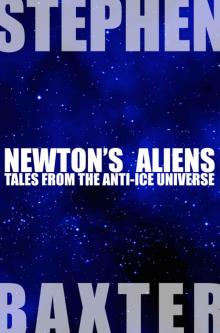 Newton's Aliens: Tales From the Anti-Ice Universe
Newton's Aliens: Tales From the Anti-Ice Universe Exultant
Exultant Manifold: Origin
Manifold: Origin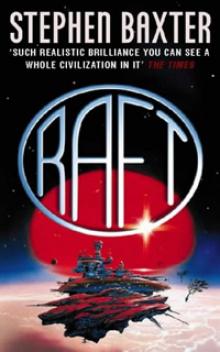 Raft xs-1
Raft xs-1 Bronze Summer n-2
Bronze Summer n-2 Transcendent
Transcendent Stone Spring
Stone Spring Coalescent
Coalescent The Medusa Chronicles
The Medusa Chronicles Origin m-3
Origin m-3 Silverhair tm-1
Silverhair tm-1 Ultima
Ultima Voyage n-1
Voyage n-1 Xeelee: Endurance
Xeelee: Endurance Space m-2
Space m-2 Ring xs-4
Ring xs-4 Raft
Raft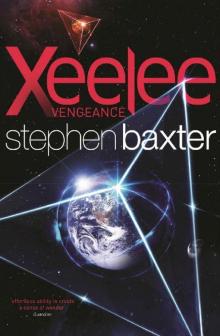 Xeelee: Vengeance
Xeelee: Vengeance Iron Winter n-3
Iron Winter n-3 Vacuum Diagrams
Vacuum Diagrams Longtusk tm-2
Longtusk tm-2 Proxima
Proxima Evolution
Evolution Titan
Titan Last and First Contacts (Imaginings)
Last and First Contacts (Imaginings) Emperor
Emperor The Massacre of Mankind
The Massacre of Mankind Starfall
Starfall Doctor Who - The Wheel of Ice
Doctor Who - The Wheel of Ice Longtusk
Longtusk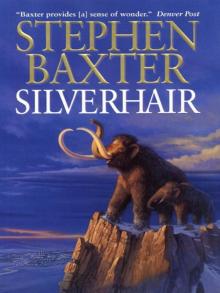 Silverhair
Silverhair Conqueror tt-2
Conqueror tt-2 Flood
Flood Flood f-1
Flood f-1 Emperor tt-1
Emperor tt-1 Moonseed
Moonseed Conqueror
Conqueror Timelike Infinity xs-2
Timelike Infinity xs-2 The Ghost Pit
The Ghost Pit Xeelee: An Omnibus: Raft, Timelike Infinity, Flux, Ring
Xeelee: An Omnibus: Raft, Timelike Infinity, Flux, Ring Weaver tt-4
Weaver tt-4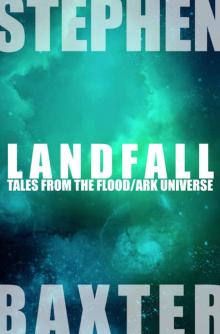 Landfall: Tales From the Flood/Ark Universe
Landfall: Tales From the Flood/Ark Universe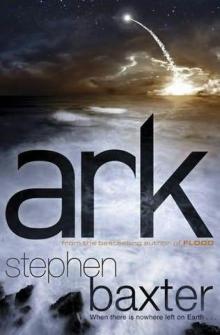 Ark
Ark Emperor: Time’s Tapestry Book One
Emperor: Time’s Tapestry Book One Space
Space Icebones
Icebones Manifold: Space
Manifold: Space Navigator
Navigator Obelisk
Obelisk The Time Ships
The Time Ships Bronze Summer
Bronze Summer Resplendent
Resplendent Moonseed n-3
Moonseed n-3 Flux xs-3
Flux xs-3 Transcendent dc-3
Transcendent dc-3 Icebones tm-3
Icebones tm-3 Phase Space
Phase Space Anti-Ice
Anti-Ice Weaver
Weaver Voyage
Voyage Time m-1
Time m-1 Timelike Infinity
Timelike Infinity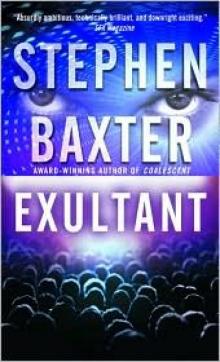 Exultant dc-2
Exultant dc-2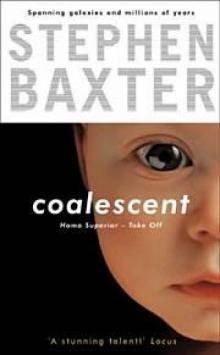 Coalescent dc-1
Coalescent dc-1 Navigator tt-3
Navigator tt-3